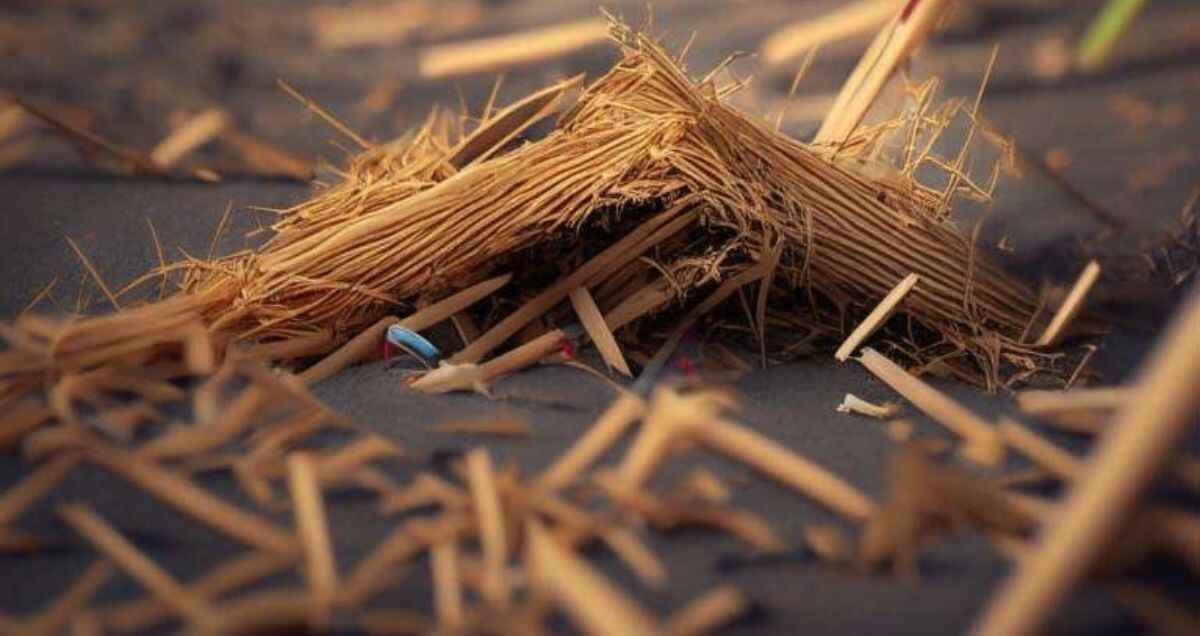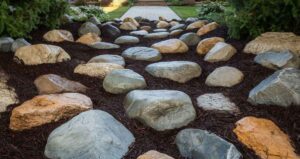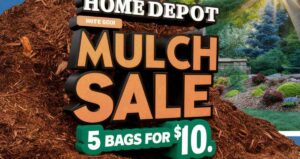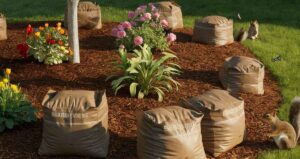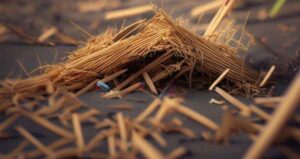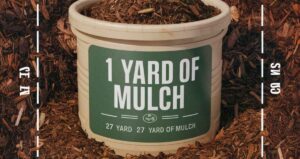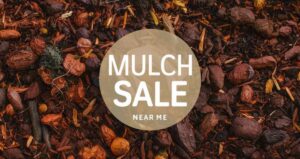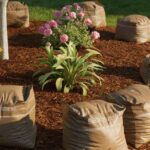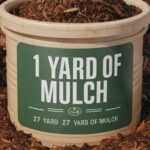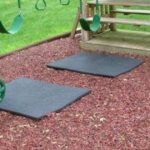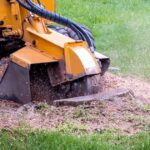Mulch is a protective layer of material spread over the soil surface in gardens and landscapes. It helps retain moisture, suppress weeds, regulate soil temperature, and enrich the soil as it decomposes.
Are you tired of spending endless hours weeding and watering your garden? Say goodbye to tedious garden chores with the magic of mulch. Discover how this simple yet powerful gardening tool can transform your outdoor space into a vibrant oasis of beauty and vitality.
In this article, we will discuss these topics: factors influencing mulch quantity, mulch quantity calculator, mulch application tips, mulching for flower beds, mulching for vegetable gardens,
mulching for trees.
Different Types Of Mulch
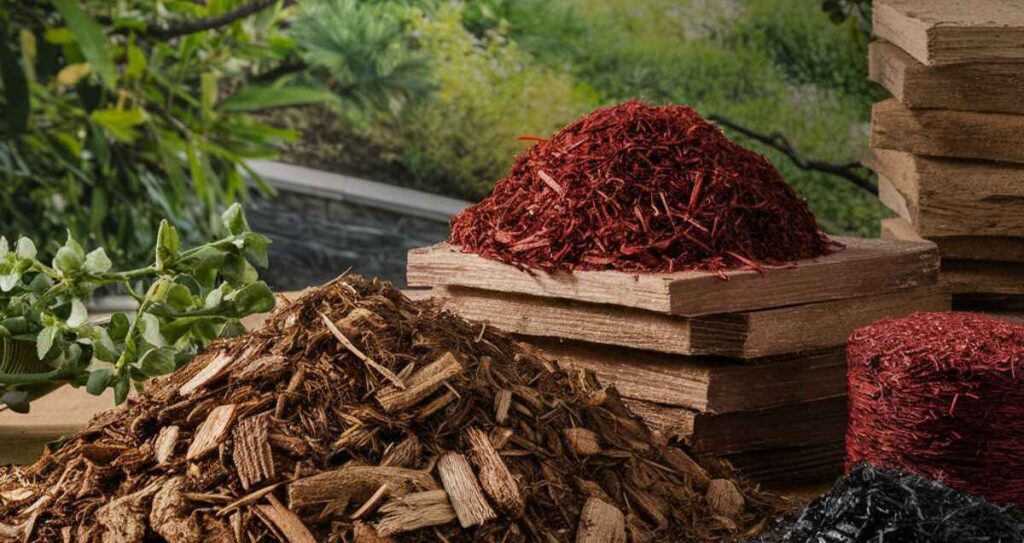
Mulching offers a range of options, divided mainly into organic and inorganic types. These options, from wood chips to gravel, each serve distinct purposes in gardening and landscaping. Understanding these distinctions can guide your choice of the most suitable mulch for your project.
Read this Blog: How Many Cubic Feet In A Yard Of Mulch?
Organic Mulches
Organic mulches include materials like wood chips, shredded bark, straw, and compost. These mulches decompose over time, enriching the soil with nutrients and improving its structure. They are an excellent choice for improving soil health and promoting plant growth.
Inorganic Mulches
Inorganic mulches, such as gravel, stones, and landscape fabric, do not decompose and provide long lasting weed control and moisture retention. While they may not enrich the soil, they offer low maintenance solutions for landscaping projects.
Factors Influencing Mulch Quantity
When it comes to determining how much mulch you need for your garden or landscaping project, several key factors come into play. Firstly, the size of the area to be mulched plays a crucial role. Whether you’re covering a small flower bed or a sprawling backyard, the square footage will directly impact the quantity of mulch required.
The desired depth of mulch is a significant consideration. While a thin layer may suffice for decorative purposes, thicker mulch is often needed for weed suppression and moisture retention. By carefully assessing these factors, you can ensure you have the right amount of mulch to meet your garden’s needs without overdoing it.
Mulch Quantity Calculator

Now, let’s roll up our sleeves and calculate the precise amount of mulch needed for your project. To do this, you’ll need to determine the square footage of the area to be mulched. For square or rectangular areas, simply multiply the length by the width.
Also read this Blog: Mulch On Sale Near Me
For irregular shaped areas, break them down into smaller sections, calculate each section’s square footage, and add them together. Once you have the total square footage, multiply it by the desired depth of mulch in feet to obtain the cubic feet of mulch needed.
Example:
Let’s say you have a flower bed measuring 10 feet by 6 feet and want to apply mulch at a depth of 3 inches.
- Square footage = 10 ft * 6 ft = 60 sq ft
- Convert depth to feet: 3 inches = 0.25 feet
- Cubic feet of mulch needed = 60 sq ft * 0.25 ft = 15 cubic feet
Mulch Application Tips
Proper application of mulch is key to reaping its benefits effectively. Here are some important tips to ensure your mulching project is a success:
- Prepare the area: Remove weeds, debris, and rocks from the area before applying mulch. Consider adding a layer of compost or fertilizer to enrich the soil.
- Apply mulch evenly: Spread mulch evenly over the soil surface, ensuring uniform coverage. Avoid piling mulch against plant stems or tree trunks, as this can promote rot and disease.
- Monitor moisture levels: Mulch helps retain soil moisture, but it’s essential to water your plants as needed, especially during hot, dry weather.
- Replenish mulch: Over time, mulch will decompose and settle. Replenish mulch annually to maintain the desired depth and reap its benefits year after year.
Mulching For Flower Beds

Mulching for flower beds is a vital aspect of garden maintenance, offering numerous benefits for plant health and aesthetics. When mulching flower beds, it’s essential to choose the right type of mulch that complements the plants and soil conditions. Organic mulches such as shredded bark or compost not only provide a protective layer over the soil but also enrich it with essential nutrients as they decompose.
Mulching flower beds is like giving your garden a protective shield. Choosing the right mulch, such as organic options like shredded bark or compost, helps regulate soil temperature, retain moisture, and prevent weed growth. By applying mulch evenly and at the right depth, typically 2-4 inches, you can create a thriving environment for your flowers to flourish and bloom beautifully all season long.
Mulching For Vegetable Gardens
In vegetable gardens, mulching plays a crucial role in maintaining optimal growing conditions. Organic mulches like straw or grass clippings help retain moisture, suppress weeds, and regulate soil temperature, promoting healthy plant development.
Apply mulch evenly across the garden bed, keeping it away from plant stems to prevent moisture-related issues. With proper mulching, your vegetable garden will thrive, yielding abundant harvests season after season.
Mulching For Trees
Mulching around trees is a simple yet effective way to promote their health and longevity. Organic mulches like wood chips or shredded bark create a protective barrier over the soil, helping to retain moisture, suppress weeds, and regulate soil temperature. When mulching around trees, apply the mulch in a ring-shaped fashion, extending 2-3 feet from the trunk but avoiding direct contact with it to prevent moisture buildup and rot.
When it comes to mulching around trees, less is often more. A layer of mulch about 2-4 inches deep is sufficient to reap the benefits without suffocating the tree roots. Additionally, be sure to replenish the mulch annually to maintain the desired depth and effectiveness. With proper mulching, trees can thrive, with healthier roots and improved resistance to environmental stressors.
Frequently Asked Questions
How do I calculate how much mulch I need?
To calculate the amount of mulch needed, measure the length and width of the area to be mulched in feet. Multiply these dimensions to find the square footage. Then, determine the desired depth of mulch in inches and convert it to feet. Multiply the square footage by the depth to get the cubic feet of mulch needed.
Is 2 inches of mulch enough?
Whether 2 inches of mulch is adequate depends on your specific gardening needs. Typically, a depth of 2 inches provides sufficient weed suppression and moisture retention for most landscaping purposes. However, in areas with extreme weather or heavy foot traffic, you may consider adding an extra inch for added protection.
How much does 20 bags of mulch cover?
The coverage area of 20 bags of mulch depends on the size of the bags and the desired depth of mulch. Generally, a standard 2-cubic-foot bag of mulch covers approximately 12 square feet at a depth of 2 inches. Therefore, 20 bags would cover around 240 square feet under the same conditions.
How much area does 2 cu ft of mulch cover?
Two cubic feet of mulch will cover an area of approximately 12 square feet at a depth of 2 inches. It’s crucial to consider the depth and density of the mulch when calculating coverage area.
Is it cheaper to buy bags of mulch or bulk?
The cost-effectiveness of buying bags of mulch versus bulk depends on various factors such as the quantity needed, delivery costs, and availability. Generally, purchasing mulch in bulk is more cost-effective for larger projects, while bags may be more convenient for smaller areas or when precise measurements are required.
How many bags of mulch to equal 1 yard?
The number of bags of mulch needed to equal 1 cubic yard depends on the size of the bags. For example, if each bag contains 2 cubic feet of mulch, you would need 13.5 bags to equal 1 cubic yard (27 cubic feet).
How much will 1 yard of mulch cover?
One cubic yard of mulch covers approximately 100 square feet at a depth of 3 inches. However, coverage may vary depending on factors such as mulch type, density, and application method.
Conclusion
In summary, mastering the art of mulching is not just about covering the soil it’s about nurturing your garden or landscape to its fullest potential. By meticulously calculating the right amount of mulch and applying it with care, you create an environment where plants can thrive.
Whether you’re aiming for vibrant flower beds, bountiful vegetable gardens, or majestic trees, proper mulching techniques lay the foundation for success. So, take the time to understand your garden’s needs, select the appropriate mulch, and apply it thoughtfully. With dedication and attention to detail, you’ll reap the rewards of a healthy, beautiful outdoor space for years to come.
